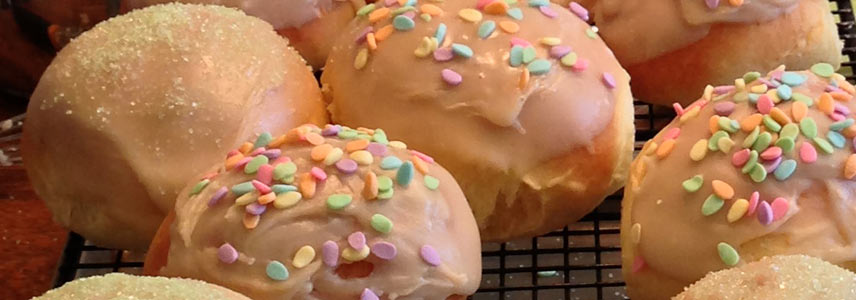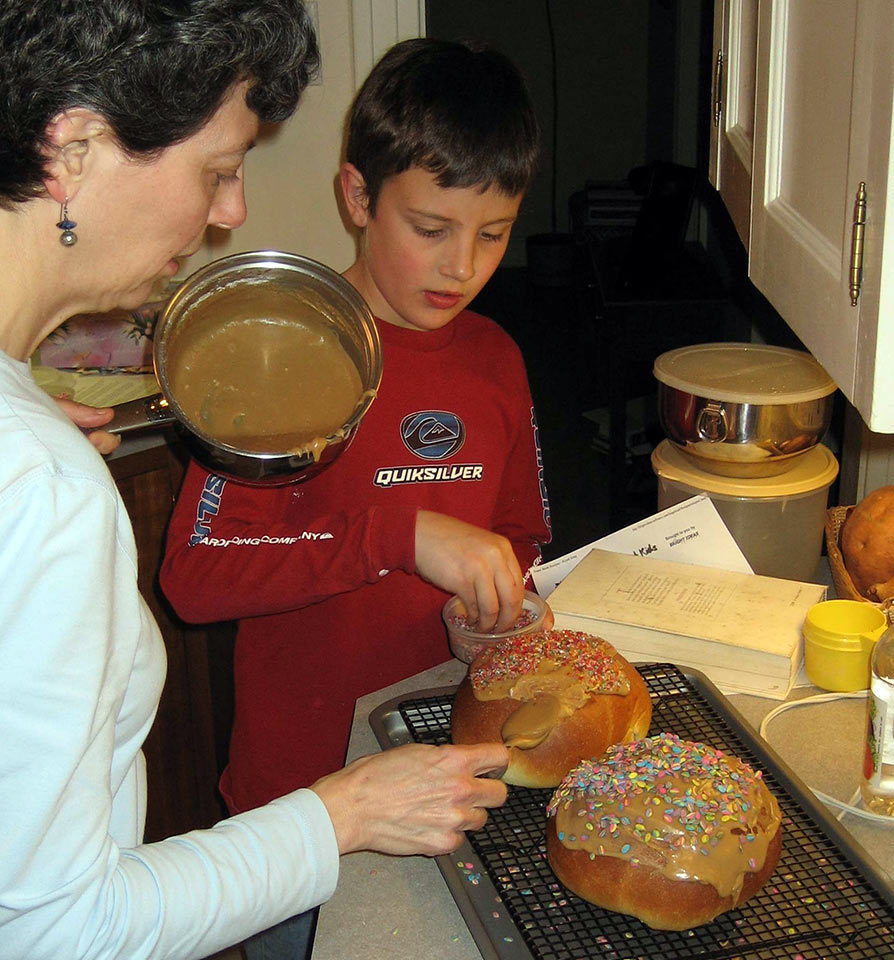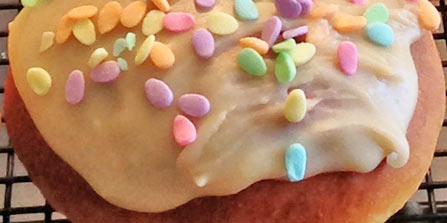
Easter is on the horizon and I'm anticipating coloring eggs, and baking Easter bread. My introduction to the Easter bread tradition comes from my sister in South Dakota living  among families with Russian, Ukrainian, and German heritage. While they specialize in foods like Varaniky (cottage cheese pockets), Mach Kuchen (poppy seed roll), and the most delicious homemade sausages, I think they outdo themselves with Paska or Easter bread.
among families with Russian, Ukrainian, and German heritage. While they specialize in foods like Varaniky (cottage cheese pockets), Mach Kuchen (poppy seed roll), and the most delicious homemade sausages, I think they outdo themselves with Paska or Easter bread.
The first recipe I tried, several years ago, specified amounts of yeast, water, sugar, "sweet cream," and milk. It also called for "8-10" eggs and "flour to handle." That first year, somehow, the loaves came out perfectly. I should have written down what I did. The second year, I thought I'd try a recipe that was more specific about amounts of flour and number of eggs. Each golden loaf looked perfect, but inside it was doughy with a gigantic hole right in the middle. The third year, I went back to the first recipe and wrote down exactly how much of everything I used. I must have done something right because the bread turned out beautifully. THAT recipe is the one I'll share in this post.
While the bread is delicious, what really makes it special is the icing. For this recipe, I really can't give credit to those South Dakotans but to a friend who wrote a cookbook Mennonite Country-Style Recipes & Kitchen Secrets. The icing is Quick Caramel Frosting, and quick it is. Once it's made, you need someone to ice the tops of the bread while you sprinkle the quickly drying icing with pink or green sanding sugar or, better yet, pastel-colored sprinkles.
Paska (Eastern Europe Easter Bread)
- 3 tablespoons sugar
- 3 packages (or 3 scant tablespoons) regular dry yeast
- 1 cup warm water
- 2/3 cup butter (10 tablespoons + 2 tsp.), softened
- 9 room temperature eggs, separated
- 1 1/2 cups sugar
- 1/2 cup light cream
- 1/2 cup milk
- 1 tsp. vanilla
- 9 cups flour plus 1/4 cup for dusting
Mix 1 Tbsp. sugar with the yeast and 1 c. warm water in a bowl. Cream the butter in a large bowl. In a smaller bowl, beat the egg yolks with the sugar; add to creamed butter and mix again. In yet another bowl, beat the egg whites till soft peaks form. Add the beaten egg whites, cream, milk and vanilla to the egg/sugar mixture, along with the yeast/water mixture, and stir until just mixed, then add the flour and stir to form a soft dough. (No need to knead; just make sure you have a dough that's not too sticky.) Dust with flour, place in a large bowl, cover with a towel and let it rise till doubled in size. Shape by hand into four or five round or oblong loaves. Place on cookie sheets covered with parchment paper and bake at 350 degrees for about 30 minutes or until golden brown. Ice while still warm, but not hot.
Quick Caramel Frosting
from "Mennonite Country-Style Recipes" by Esther Shank

- 1/2 cup (1 stick) butter
- 1 cup lightly packed brown sugar
- 1/4 cup milk
- 2 cups sifted powdered sugar
Melt butter and brown sugar over low heat and boil two minutes, stirring constantly. Add milk and heat again just to boiling. Remove from heat and cool for 3 minutes. Add the powdered sugar and stir until smooth. (A whisk works very well for this task.) Ice the still-warm bread one loaf at a time, covering the icing in the pan while sprinkling the iced loaf with pastel sprinkles. Once the icing dries and the bread is completely cool, the loaves can be placed in a covered container or wrapped in plastic and frozen.

